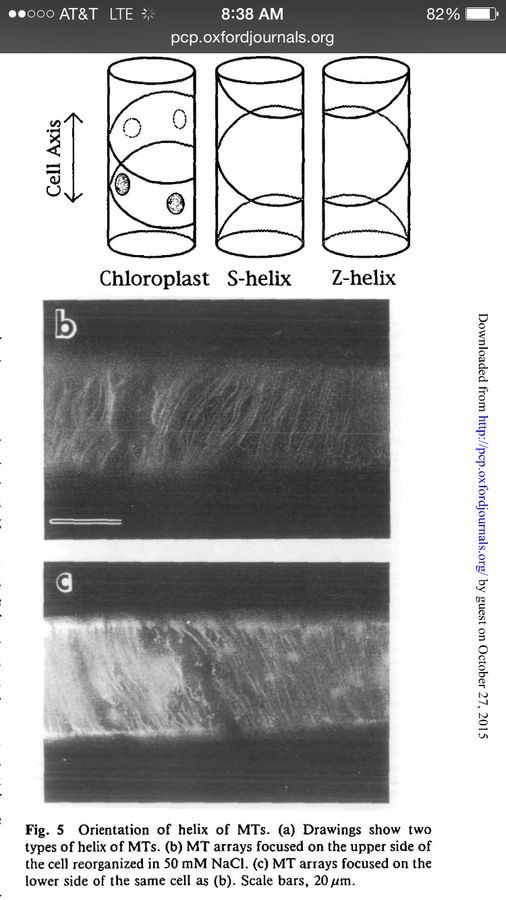Why does Spirogyra form a helix?
 Oct 27, 2015 • 3:54 PM UTC
Oct 27, 2015 • 3:54 PM UTC Unknown Location
Unknown Location 140x Magnification
140x Magnification Microorganisms
Microorganisms
Manu Prakash
I am a faculty at Stanford and run the Prakash Lab at Department of Bioengineering at Stanford University. Foldscope community is at the heart of our Frugal Science movement - and I can not tell you how proud I am of this community and grassroots movement. Find our work here: http://prakashlab.stanford.edu
266posts
1192comments
42locations

Sometimes you look at something, and an obvious question is staring at you in the face. Other times, it’s hard to formulate your question and an observation is in the grey area. Here is a case; where the question is clear but the answer is nowhere to be found (at least as far as I can look).
Some algae arrange chloroplast (the engine that converts sun light into useful fuel for the plant) into a beautiful helical pattern. Don’t believe me – just watch..
Some algae arrange chloroplast (the engine that converts sun light into useful fuel for the plant) into a beautiful helical pattern. Don’t believe me – just watch..
It’s incredible. Just absolutely beautiful. The intricate patterns of winding and unwinding paths these chloroplasts take. I started thinking about these as train tracks and chloroplasts would be running up and down. So I did a time lapse – this is what I saw:
Nothin running up and down. Almost no cytoplasmic streaming. I did not image for long to capture the growth – but that’s for another time.
Now, I searched and searched and can not see if anyone has figured out why they form a helical pattern. Is it for the most uniform arrangements of choloplasts? Maximum efficiency of capturing a photon just strolling around?
Maybe helix are a fundamental geometry in nature – and very hard to not make. After all, most architectures inside the cell are made of rod like structures. So I did some search to find of the micro tubules (cytoskeleton of a cell which keeps the structure together – amongst other things).. And I did find some beautiful work. I am attaching an image here and a link to the paper.
Now, I searched and searched and can not see if anyone has figured out why they form a helical pattern. Is it for the most uniform arrangements of choloplasts? Maximum efficiency of capturing a photon just strolling around?
Maybe helix are a fundamental geometry in nature – and very hard to not make. After all, most architectures inside the cell are made of rod like structures. So I did some search to find of the micro tubules (cytoskeleton of a cell which keeps the structure together – amongst other things).. And I did find some beautiful work. I am attaching an image here and a link to the paper.

These drugs are able to disrupt the helix found. Also, I was surprised with the S and the Z helix – but you can see both in Spirogyra.
http://pcp.oxfordjournals.org/content/39/10/1099.full.pdf
I forgot to say – this beautiful algae is an abundant pond scum. So next time, you look at some pond scum – pay some respect. It’s got a tangle of mysteries we know nothing about – quietly growing in our own backyards. Silky little tube, putting cells a brick at a time only waiting for someone to ask a question – why a helix?
Cheers
Manu
Ps: thanks Tina (UCSF) for giving me your cellphone, where mine did not have any power. Clearly, someone needs to make a photosynthetic chloroplast coating for my phone cover – so I never run out of battery.
http://pcp.oxfordjournals.org/content/39/10/1099.full.pdf
I forgot to say – this beautiful algae is an abundant pond scum. So next time, you look at some pond scum – pay some respect. It’s got a tangle of mysteries we know nothing about – quietly growing in our own backyards. Silky little tube, putting cells a brick at a time only waiting for someone to ask a question – why a helix?
Cheers
Manu
Ps: thanks Tina (UCSF) for giving me your cellphone, where mine did not have any power. Clearly, someone needs to make a photosynthetic chloroplast coating for my phone cover – so I never run out of battery.
Sign in to commentNobody has commented yet... Share your thoughts with the author and start the discussion!

 0 Applause
0 Applause 0 Comments
0 Comments
















